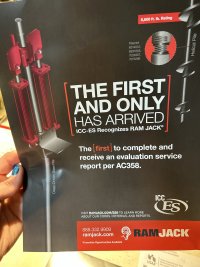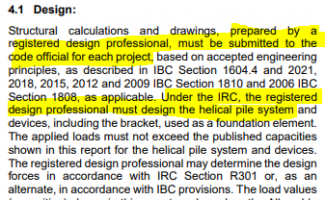My doughter has some cracks in the walls & ceilings of her slab on grade house in south texas, and she is getting proposals from foundation repair companies. One particularly high pressure sales guy was saying their system has building code approval, and everybody else uses cheap inferior methods. Here‘s a shot of part of the brochure. Sure enough it claims to be certified by ICC-ES, but the details are vague. I tried to research it, wasn't easy. It’s the same ICC that publishes the code book, but it looks like the “certification” only says the method meets the definition of the code.
I’m not sure I like the idea of the ICC publishing this type of information. It’s not a UL rating, just an opinion that it meets the definition. I assume the ICC gets money for this. And the sales people twist it to make it seem like it's a code item.

I’m not sure I like the idea of the ICC publishing this type of information. It’s not a UL rating, just an opinion that it meets the definition. I assume the ICC gets money for this. And the sales people twist it to make it seem like it's a code item.



